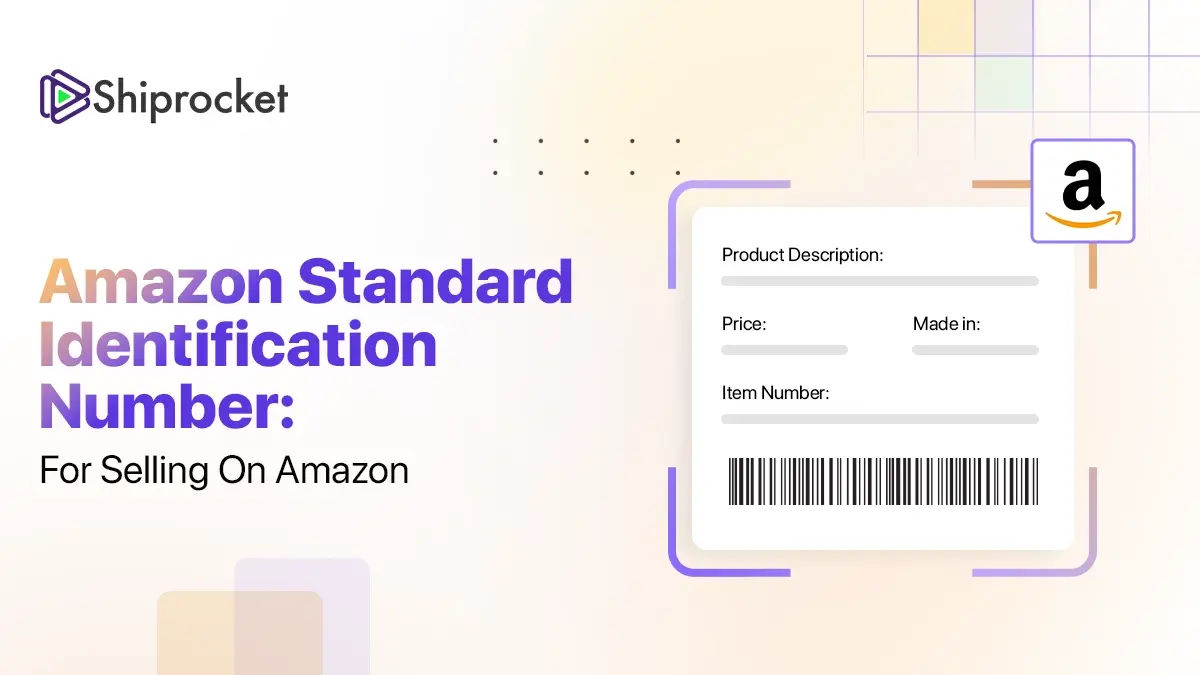Social Commerce: Role, Top Platforms, Strategies, & Benefits
- What is Social Commerce?
- How Does Social Commerce Work?
- Difference Between Social Commerce & eCommerce?
- Similarities Between eCommerce and Social Commerce
- 4 Top Social Commerce Platforms
- Social Commerce Strategies You Should Include in Retail Marketing
- Examples of Social Commerce
- Benefits of Social Commerce
- Tips for Effective Social Commerce
- Social Commerce Trends in 2024
- Conclusion
India’s consumer behaviour is gradually changing, as the buying habits. Nowadays, Indian consumers claim uniqueness and control over their lives, careers, and creative expression. They like to follow or be inspired by relatable individuals rather than paid marketing. The new-age consumers want to buy and consume goods that match their personalities. This is the main reason for this paradigm shift and the emergence of social commerce.

What is Social Commerce?
Social media platforms like Facebook and Instagram are used for social commerce to help promote and sell goods & services. Customers can purchase using this selling model without leaving the social media apps.
With the aid of social commerce, customers can browse businesses, learn about products, and make purchases all within the same app. A more convenient and interactive purchasing experience is provided by social commerce.
Social commerce is distinct from conventional social media marketing techniques, encouraging consumers to browse a brand’s website before making a purchase—instead, social media sites with virtual storefronts like shops on Facebook and Instagram.
Instagram, Pinterest, Facebook, and TikTok are four social media platforms that have built-in social commerce features.
How Does Social Commerce Work?
Facebook, Instagram, Pinterest, and TikTok are some of the most popular social commerce platforms available to retailers. These platforms support native eCommerce features. They enable retailers to directly sell their products. These social commerce platforms work on a collaborative approach to improve sales and marketing. They leverage the benefits of social media networks. Sellers can make their user adoption work to their advantage and create meaningful and long-lasting relationships with their customers.
Once sellers have figured out how their preferred social commerce algorithms work, they can engage with customers like never before. However, on these social commerce platforms, it’s more about reaching and engaging with your customers. These will then drive sales and revenue. Social commerce also gives the same opportunity to customers – to engage with their favourite brands. This can happen through product reels, sponsored product posts, banner ads, and posts featuring a direct link to buy the product.
Brands can offer unique discount codes to their followers purchasing via these platforms. It will help them get insights into which products are driving the most sales, etc. Most social commerce platforms offer analytics functionality. This collection and evaluation of customer data is the cornerstone of social commerce, enabling brands to tailor their social media marketing strategy based on customer preferences. When they meet customer expectations, they can increase engagement and boost sales.
Difference Between Social Commerce & eCommerce?
The table below highlights the key differences between eCommerce and social commerce.
| Social Commerce | eCommerce |
|---|---|
| Two-way relationship with customers. | One-way relationship with the customer. |
| Interaction occurs both online and on social media. | Interaction occurs only on the eCommerce website. |
| Participatory and collaborative. | Limited to enterprise & business partners. |
| Community creation of content. | Push notifications to a relatively passive audience. |
| It’s comparatively cheaper since it does not require an upfront cost of building and maintaining an online store/website. | It’s more expensive since an upfront cost is required to create an eCommerce website. SEO and content marketing are other aspects of eCommerce businesses that require significant initial investments, both in terms of time and money. |
Similarities Between eCommerce and Social Commerce
As discussed above, eCommerce and social commerce are different in several aspects. However, there are some points where you’ll find they are quite similar to each other.
- Both social commerce and eCommerce use digital technology to connect sellers and customers online. This involves using different digital marketing strategies, including social media marketing, paid advertising, content marketing, newsletters, etc. Brands use these digital marketing strategies to gain more visibility, attract potential customers, and drive more sales.
- Secondly, both heavily rely on data analysis. Unless brands are using customer data to their advantage, they are missing out on plenty of opportunities to expand. They must use data if they want to appeal to more customers on either platform. Regardless of whether you rely on eCommerce or social commerce, your main goal is to drive more sales. Using data can help you personalise content, gain more customers, and even increase repeat purchases from existing customers.

4 Top Social Commerce Platforms
Facebook and Instagram will continue to be the leading social commerce platforms, with over 69 million and 47 million shoppers in the US, respectively, by 2025. Though these two might be the biggest social commerce platforms, they are not the only ones.
Here are the top social commerce platforms you can leverage to grow your eCommerce business.
India has one of the largest audience sizes on Facebook, with over 239.65 million users. It makes sense for brands wishing to enter social commerce to start with a Facebook profile. A Facebook shop, an entirely customized online storefront, can be created by any Facebook Business account. Brands can create one from scratch or upload their existing product catalogue here. It has a very low barrier to entry, and you can easily set it up and access it from your Facebook business profile. It also allows you to automatically sync inventory if you’re using a partner platform.
Visitors on a brand’s Facebook page can browse the offered products and their sizes, colour options, and specifications. Through Facebook Messenger, prospective customers can reach out to brands directly. The Facebook Shop tab on the mobile app also allows customers to discover brands based on their preferences and behaviour. When ready to make a purchase, users can utilize Facebook Checkout without leaving the app, or businesses can send them to an online store instead. However, it also gives you an option to redirect customers to your website.
India has the most prominent Instagram audience in the world, with 230.25 million users. Instagram Shops allow users to purchase the goods featured in the app’s photos and videos. Like Facebook, business accounts enable users to display their interests through a resizable online store. Brands can do so by curating product collections. Every product in an Instagram Shop catalogue has its page, which includes the item’s price, product description, and images or videos.
Instagram Shopping is directly linked to your Facebook Shop. You’ll have to link your Instagram business account to your Facebook business profile to set up a shop. Once you have done that, you can upload an existing product catalogue or even create a new one.
Then, you must use Instagram Product Tags. It will help users to discover and buy your products easily. Instagram Product Tags help you highlight things from your products catalogue directly in your posts and videos. Your potential customers can engage with your posts by tapping on a tag. It will also help them immediately learn more about your product.
The ‘View shop’ button will allow your potential customers to view your other products. Like Facebook, you can enable purchases within the app for a seamless shopping experience or you can redirect buyers to your eCommerce website.
TikTok
TikTok is a relatively new player, but because of its explosive growth, anyone may believe that it has been a social commerce platform for much longer than it has. By 2025, the video-sharing website is expected to have 48.8 million US subscribers.
However, users of TikTok aren’t merely amusing themselves by swiping through the app. According to TikTok, 39% of users found a brand or product via TikTok that they needed to be made aware of. Nearly half of users have bought anything they saw on the app.
You can set up a TikTok Shop to display your products and enable purchases directly within the app. You can also create shoppable videos. TikTok Live is a great feature that keeps viewers engaged and enables them to shop directly on your TikTok LIVE broadcasts. 50% of TikTok users purchase after watching a TikTok Live.
Pinterest is an image-focused search engine and social networking site. It is one of the largest social networks in the world. Users pin vacation destinations, make mood boards, and, most crucially, find new items. Every month, millions of users use the platform to look for products and get ideas. Pinterest Shopping has made it easier to buy and sell products on the platform. You can upload your product catalog to your Pinterest business page and then tag products in your Pins. It will enable users to click on those tags and learn more about your products. Unlike Facebook and Instagram, Pinterest doesn’t allow users to complete purchases within the app. It just simplifies their buying journey and gives your brand a platform to reach more customers. These Product Pins are not direct tools for social commerce. Your potential customers will still be redirected to a landing page to complete their purchase.
Snapchat
Snapchat is unbelievably popular, particularly among the younger generation. Its unique filters and gimmicks make it extremely interactive for both users and sellers. It works with augmented reality and can become a fun way to promote your products. Snapchat is still relatively new to the world of social commerce and its recent partnership with Shopify has enabled it to create brand-based filters. Snapchat launched a beta version of Brand Profiles in 2020. They called it a native online store experience that’s powered by Shopify. It helps you showcase your products in a way that promotes brand identity. What’s more? Your customers can browse and purchase your products directly from the app. The filters that Snapchat provides can be embedded to link with the eCommerce platforms to promote brand recognition and product awareness.
Social Commerce Strategies You Should Include in Retail Marketing
Here are some of the most effective social commerce strategies you can incorporate into retail marketing:
Influencers are a brilliant way to get people to engage with your brand. Social media influencers help you promote your products and services through their channels by earning a small commission for every sale made. This type of marketing makes your buyers believe in your products as it acts as a method of personal recommendation and approval. It yields positive results as the number of social media users today is abundant and hence engaging content will do the trick.
Content marketing is a more interactive form of marketing. The benefit is that it can be extremely versatile. From blogs to videos and reels, all forms of multimedia can be used to publicise your products and services. You can pique the interest of your audiences in methods that appeal to them. Hence, you can build relationships with your audiences more effectively and establish your brand name. Furthermore, you can also integrate such engaging content with your social media pages to act as a gateway for social selling.
Marketing can be transformed into a two-way street. Instead of doing all the heavy lifting, you can ask your product users to share their experience using your products and services. You simply need to create an avenue for them to do the same. This method helps you build trust amongst the new buyers and generate organic customers. The addition of forums where customers can interact with your brand will also help you establish better relationships with them.
- Live streaming events
Livestreaming engaging events can help you catch the eye of your target. These can be hosted on several platforms like YouTube, Twitch, Zoom, and more. It shows that your brand is customer-centric and actively makes efforts to engage with its buyers. It will also give your clients the chance to voice out their thoughts and ideas which give you valuable insight to build on. Live events will help you generate higher sales if promotions and discounts are also part of the event.
Affiliate marketing is a brilliant strategy to help you reach out to the masses through multiple avenues. It is rather simple, all you have to do is integrate your shopping carts onto the most active and popular social media platforms so that users can buy from you without leaving that platform. This allows you to drive conversions.
Social media advertising is a rather simple and effective digital marketing tool. You can post content on your channels that showcase your products along with their benefits. The key is to create engaging content to attract your target audiences. Such forms of marketing leave a lasting impact on your viewers and promote the purchase of products from your brand.
Examples of Social Commerce
Here are examples of some businesses that leverage social commerce like a pro:
- Patagonia
Patagonia is a brand that has thrived via the boards on Pinterest. These boards help you replicate the experience that a person might find on a conventional eCommerce website. Customers get recommendations on their Pinterest board based on their preferences enabling Patagonia to win higher ranks in this form of targeted approach.
- Target
Even the biggest retailers are using social media tools to capitalise on the market. Target has a bundle of catalogues posted as content on their social media pages to shine a light on items that their buyers would be interested in. It works well with products that are not pricey and can be purchased without a second thought via their application. The right use of Instagram’s hashtags cross-referenced against consumer searches can help you provide a customised experience to your clients.
- Milk Bar
Milk Bar was a simple barley that began out in the east village in New York back in 2008. Celebrity Chef Christina Tosi began this bakery with a vision and has managed to grow this tiny bakery into a national eCommerce enigma to sell cookies, cakes, and other baked goods. 75% of Milk Bar’s revenues came from their retail stores while the remainder came from their online orders. Through the right use of Instagram, Milk Bar gained success largely.
- Cluse
Cluse is a Netherlands-based fashion brand that is well-known for its watches, jewellery, and accessories. They launched their eCommerce operations in 2014 and Instagram was instrumental in their success. Today, they are known globally and their products are extremely popular. Cluse fills up its Instagram feed like a fashion magazine while providing its influencers an avenue to show off their products.
- Juno & Co
Juno & Co. is a makeup brand that makes use of TikTok to promote its products. They throw light on how innovative their products are. The brand has gained over 200 thousand followers on TikTok and there are over a million views on their content. Juno & Co. has grown their revenue by over 300% and TikTok has played a vital role in their success.

Benefits of Social Commerce
Here are some of the biggest benefits of using social commerce.
- Broaden your target market
Social media trend is always on the rise. Today, over 4 billion users are using different social media platforms globally. These platforms give their users a view of different brands and the experience they provide. It is a well-known fact that consumers almost always find products and services that meet their needs through organic posting of content by a brand. By looking out for brands on social media and choosing products by watching the posts of people they follow, there are several ways to discover more products.
Social commerce also quickens the pace of the transaction process and offers a brilliant and simple method to collect feedback and reviews. You can also understand who exactly your customers are through these platforms and create content that appeals to them to sell more of your products. You will also be able to chat with them to provide more personalised customer service.
Social media is also extremely beneficial when your target is the genZ generation. They make huge online purchases, making your sales go up. According to a CNBC report, 86% of Gen Z shoppers say social media influences their buying decisions. In 2023, a Deloitte study found that 50% of Gen Zers and millennials see online interactions as meaningful replacements to in-person experiences.
- Seamless shopping experience
Roadblocks can be avoided through social media. The shops on these platforms make it extremely simple to follow the process of discovery and purchase. They directly allow you to check the product catalogue and checkout thereby eliminating other issues. A click of the mouse or tap of a screen is all it requires for a customer to change their mind. By shopping through social media platforms you can avoid all of this.
- Collect data on target audience
Social commerce gives you the inside scoop about the behavior of your consumers. You will be able to access your customer’s profile and gain information to add to your existing strategy. With the insights you receive on social media platforms, you will gain a more clear insight and a comprehensive understanding of the habits of your customers.
- Rely on social approval
The idea of communication is lost with conventional eCommerce shopping techniques. With shopping on social media platforms, you can create a more interactive experience. Moreover, your buyers can also communicate or view the reviews of your products instantly and make the purchase. Fast approval and recognition of your products will create a ripple effect on your sales.
- Get customer feedback
Social proof is easily attained when you shop through the means of social commerce. But through the feedback of your customers, you can help your new buyers make an informed decision. A positive feedback loop will be established when you manage your customer journey on these platforms. Furthermore, your funnel can gain more followers through your content growing your engagement rates. This in turn increases your sales.
- Drive additional revenue than traditional eCommerce
Market-driven revenue is largely increasing for eCommerce businesses through social commerce. Even though this is only a small portion of the overall retail sales, it creates a greater number in the overall revenue collections. Social commerce has created new ways for you to drive up your sales and improve your business.
Tips for Effective Social Commerce
You can make the most of social commerce with the tips given below:
- Use AI to streamline sales and customer support
A quick response can be what makes your customer stick with your brand. Waiting is something that makes your customers lose interest and abandon your brand. With the use of AI-integrated chatbots, you can clarify all your consumer queries at any time and ensure that they are taken care of. It ensures that you do not lose any sales.
- Engage with your followers
The idea is to engage with your viewers. That is what social commerce is all about. To give your buyers a good experience, you must create a good rapport with them through your content. You cannot simply post a list of your products and expect a rise in sales. You will be required to tweak it with some interesting content to represent what your brand is all about.
- Listen strategically
Social media platforms give you the inside scoop of your audiences. Thus, you must ensure that you listen to them. By keeping a close eye on your reviews, comments, questions, etc., you will learn more about them. You must ensure to provide consumer service as well.
- Encourage reviews
Reviews are key for you to make sales. They help consumers make an informed decision and hence you must encourage your buyers to review your products. You can automate the review request process as well. This way you never forget to ask your consumers for their opinions. When the number of reviews for your products increases, your sales will automatically be driven up.
- Price your products to move
The idea behind online buys is the price. You must ensure that they are affordable. People do not tend to spend on luxury products when they shop online. Hence, pricing your products properly is key for you to drive up your sales.
Social Commerce Trends in 2024
According to an IMARC Report, the Indian social commerce market is expected to exhibit a CAGR of 35.70% during 2022-2027. One of the main factors driving the market’s expansion in India is the country’s increasing digitization. With social commerce, businesses can make transactions without having a physical presence and cut down on infrastructure, communication, and overhead costs.
Live streaming is another social commerce trend that brands should look out for and capitalise on. Given the interactive and engaging nature of product live streams, it will continue to drive more sales in the future. According to a study, 60% of shoppers already use live-stream shopping, while 53% plan on using it.
In keeping up with this, consumer electronics used to access social media platforms, such as smartphones, laptops, and tablets, also produce a promising outlook for the market’s growth. In addition, several technological developments, such as incorporating social commerce platforms with voice assistants and chatbots powered by artificial intelligence (AI) that can predict user behaviour and enhance the user experience, are boosting industry expansion.
Conclusion
With time, businesses need to amplify their reach; the best way to do so will be through social commerce. Higher internet and smartphone penetration is aiding the growth of social marketing in India. Social commerce is anticipated to revolutionize and simplify the entire ecommerce sector with strong support from the younger generations and a steady expansion rate.
Social commerce is the use of social media platforms like Facebook and Instagram to sell goods and services. This serves as an excellent opportunity for small businesses that do not necessarily have all the resources to get started with a physical store or a branded website.
Under social commerce, sellers use platforms like Facebook, Instagram, TikTok, and Pinterest to list, promote and sell their goods and services online. Using this business model, business owners can create a branded store online and sell goods.
Out of the many benefits of social commerce, some key features are:
1. It is super convenient for both sellers and buyers.
2. Sellers can keep track of their sales through detailed data insights.
3. It is easier to define and hyper-target audiences using social media.





